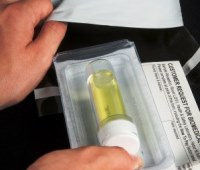Biological monitoring for acetamiprid: Collaborative working with customers


The Challenge
A Forestry England nursery needed to assess whether their
existing exposure controls for acetamiprid were effective in
protecting employees from risk of harm.
Acetamiprid is a pyridyl-methylamine neonicotinoid insecticide,
registered for various applications and which has been evaluated in
the context of both the Biocidal Products Regulation (BPR) (EU)
528/2012 (ECHA, 2017) and the Plant Protection Product (PPP)
Regulation (EC) 1107/2009 (EFSA, 2012). It acts on insects by
contact and ingestion, affecting the central nervous system. In
humans, the toxicity can cause nausea, vomiting, respiratory
failure, tachycardia, hypotension, muscle weakness and
convulsions.
The Solution
Biological monitoring is a well-established tool to help
quantify exposure to potentially harmful substances.
Workers at the nursery gave informed consent to provide urine
samples and HSE quantified pre- and post-shift levels of
acetamiprid over consecutive days.
The Outcome
Results from one workplace indicated elevated exposure, and
although workers were provided with comprehensive protective
equipment, the pattern of exposure was characteristic of absorption
through the skin.
Therefore, the employer provided fresh personal protective
equipment and reviewed work practices.
Subsequent sampling showed that exposure was considerably lower
in two out of three individuals, although the third operator still
had elevated exposure. Interestingly, this operator was responsible
for filling and emptying the automated sprayer which highlighted a
further area for attention.
Biological monitoring helped to identify contaminated PPE as a
source of exposure of workers to the pesticide. It informed a new
strategy for storing and replacing kit at the plant nursery.
View more examples of our work in this
area.
This case study was featured on page 57 of the 2021 Annual Science Review.
For more information about how we could do something
similar for you, email us at: registration.sample@hse.gov.uk.
Back to the top